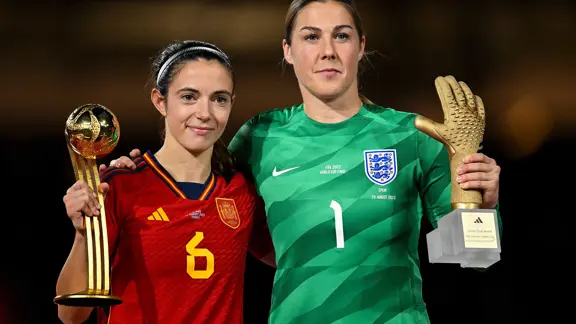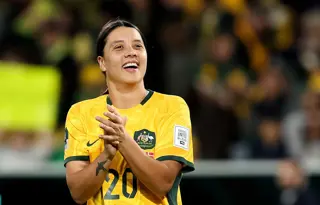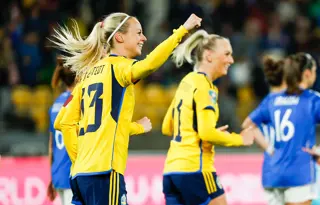News
Four key learnings from FIFPRO’s Women’s World Cup player survey

- The global players’ union surveyed 260 internationals from 26 nations to get direct feedback on compensation, conditions, and workload at the 2023 Women’s World Cup
- Thirty percent of players earned less than $30,000 from their club and national team in the last year
- Sixty percent said post-tournament rest was not long enough, while two-thirds felt technical staff could be improved
Increased financial compensation and adjustments to workload are the biggest asks of Women’s World Cup players, according to a FIFPRO survey.
The global players’ union surveyed 260 internationals from 26 teams after Australia-New Zealand 2023, with every continent represented, to hear their feedback on their Women’s World Cup experience and a range of player-facing topics, including compensation, conditions, and workload. FIFPRO highlights four core learnings from the player survey.
1) Huge disparity in income levels of Women’s World Cup players
FIFA revealed on the eve of the Women’s World Cup final that the tournament had “broken even” after generating more than $570m in revenue. But according to the survey data, 49 percent of players said they earned less than $50,000 from their club and national team in the last year; six percent earned less than $10,000 and eight percent earned less than $5,000. Fifteen percent, meanwhile, had an income of over $150,000 – the highest bracket in the survey.
The income findings do not include the per-player prize money based on team performance at Australia-New Zealand 2023. The collective action of FIFPRO, its member unions and over 150 international players successfully pushed FIFA to implement the first ever per-player compensation. This meant that each player received a minimum of $30,000 for their participation in the tournament. FIFPRO remains committed to pay equity for the men’s and Women’s World Cup in 2026 and 2027.
2) Substantial medical improvements required for women’s internationals
One in ten players surveyed at the Women’s World Cup did not have a pre-tournament medical, while 22 percent did not receive an electrocardiogram (ECG) prior to participation at the tournament. FIFA mandates the undertaking of a pre-competition medical assessment in its competition regulations.
Whilst this is a worrying indication of the deprioritising of players’ health, it is nonetheless an increase compared to the number of ECGs conducted in qualification. During qualification for the Women’s World Cup, 54 percent of players did not have a pre-tournament medical and 70 percent did not receive a pre-tournament ECG. FIFPRO has called for the Women’s World Cup qualification pathway to have global standards implemented.

3) Pre- and post-tournament rest an acute concern for players
As two European nations contested the Women’s World Cup final on 20 August, the continent’s premier international club competition – the UEFA Women’s Champions League – kicked off on 6 September. It left players with little time to recover physically and mentally from one season to another. One player commented that it was “mentally exhausting” going straight from an international tournament back into a club campaign with insufficient rest.
In the build-up to the Women’s World Cup, there was also much discussion related to the pre-tournament release period: as the tournament began much later than previous editions, many club seasons ended approximately six weeks before the tournament began. Fifty-three percent of players felt that the pre-tournament rest period was not long enough, with 75 percent having between 0-13 days’ rest in total and two thirds of players indicated that they did not feel physically prepared coming into the tournament.
Sixty percent of players at the Women’s World Cup felt that post-tournament rest was not long enough, with 86 percent having 0-13 days’ rest in total. According to FIFPRO Chief Medical Officer Prof Dr Vincent Gouttebarge, “if players don't have that secure period of at least three weeks, or ideally five weeks, after a long campaign before going into pre-season, then it’s not only dangerous from the physical and physiological point of view, but from a mental perspective as well”.

4) More support needed at the top of the international women's game
FIFA hailed the 2023 Women’s World Cup as “the biggest and best of all time” and while strides have been made to improve conditions and professionalisation at the tournament compared to previous years, it is clear from the survey that more still needs to be done to ensure players enter the tournament feeling physically and mentally ready to compete.
Eighty-three percent of players surveyed stated they were professional footballers and 21 percent had a second form of employment outside of football.
Moreover, sixty percent of players surveyed said mental health support could have been improved, one in three players felt they did not have sufficient nutrition, and two-thirds believed technical staff could be improved, with one player commenting that “investigation into qualified technical staff needs to be completed”.
Women's World Cup Player Survey

